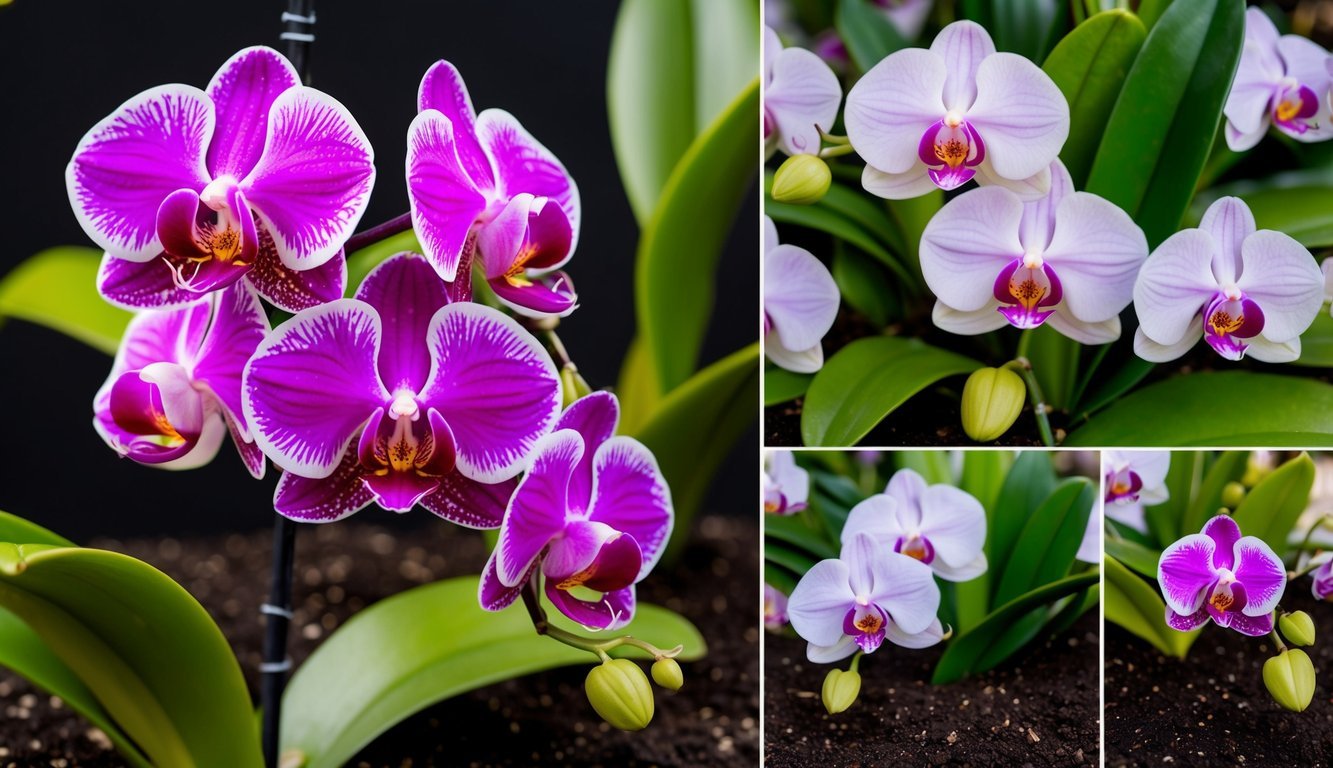
Orchids are fascinating plants, representing one of the largest families of flowering plants with an astonishing diversity that includes over 800 genera and nearly 28,000 species.
This vast variation, second only to the Asteraceae family, makes growing and caring for these mesmerizing plants both exciting and challenging.
In this guide, we’ll dive into three of the most recognizable orchid types: Oncidium, Dendrobium, and Cymbidium.
Expert Melissa Strauss shares valuable insights on how to distinguish between these genera and cater to their unique needs.
Understanding orchids goes beyond just recognizing their beauty; it’s essential for any enthusiast interested in nurturing them successfully.
While many orchid varieties exist, only a select few commonly populate nurseries and garden centers.
Most thrive in tropical locales characterized by high humidity and moderate temperatures—requirements that often dictate care routines.
Key Features for Identification
To accurately identify these orchids, focus on four main aspects: their growth patterns, leaf structures, flowering traits, and overall size.
Growth Patterns
The way orchids grow can offer significant clues to their identity.
They adapt to their environments in various ways, typically categorized into three types: epiphytic, lithophytic, and terrestrial.
- Epiphytic Orchids: These plants thrive on trees, drawing moisture from the humid air around them while their roots remain exposed to the atmosphere.
- Lithophytic Orchids: Similar to epiphytes, these orchids inhabit rocky crevices but stay closer to the ground, affecting their light needs.
- Terrestrial Orchids: Ground-dwellers, these species root directly in soil.
Oncidiums primarily fall into the epiphytic category, often found high in tree canopies.
Dendrobiums are versatile, with some species being epiphytic while others are lithophytic or terrestrial.
Meanwhile, Cymbidiums tend to be semi-terrestrial, anchoring themselves in soil but also developing aerial roots.
Orchids can further be classified based on their growth forms, with two main categories: monopodial (growing vertically from a single stem) and sympodial (spreading horizontally and producing separate pseudobulbs).
The three genera we’re focusing on exhibit sympodial growth.
Leaf Structures
The distinctive growth habit of these orchids influences their foliage.
With sympodial growth, each pseudobulb behaves almost like an individual plant with its own root system.
- Oncidiums typically feature elongated, strap-like leaves that vary by species, with most pseudobulbs yielding two to five leaves.
- Dendrobiums present tall canes adorned with leaves that alternate on both sides, shaped by the plant’s maturity and growth.
- Cymbidiums display clumped leaves that emerge in clusters, offering a denser appearance yet still exhibit overlapping traits found in other sympodial orchids.
Each pseudobulb on these orchids produces both foliage and flower stems, with the number of spikes varying by species.
Generally, one to two flower spikes arise from each pseudobulb across all three types.
However, the size, shape, and design of their blooms differ, maintaining some uniformity within each genus.
Overall Size
The size of orchids can be quite striking, with many measuring between one to four feet tall.
However, some species are much smaller or larger, ranging from the tiny Platystele jungermannioides at only two to three centimeters up to the impressive Grammatophyllum speciosum, which can soar to heights of 25 feet.
Of our trio, Oncidiums usually reach heights of one to two feet, while Dendrobiums can vary significantly, from six inches to four feet tall.
Cymbidiums typically grow to heights of one to four feet.
Cultivation and Care Tips
To keep these stunning orchids thriving, it’s essential to provide optimal humidity and excellent drainage.
Use pots designed for good drainage, filled with a coarse, bark-based potting medium.
Since these orchids often thrive with their roots exposed to the air, ensuring adequate airflow is crucial to prevent root rot.
Aim to keep the potting mix slightly moist without allowing it to become waterlogged.
In terms of light requirements, these orchids prefer brighter lighting conditions compared to many others.
Thicker-leaved varieties can handle direct sunlight, while those with finer leaves benefit from partial shade, ideally receiving between 20% and 60% shadow.
Excessive sunlight may scorch the leaves, while inadequate light can hinder blooming.
Given their sensitivity to environmental factors such as light, water, and humidity, it’s critical to grasp each species’ specific care needs.
By mastering the unique characteristics and care requirements of Oncidium, Dendrobium, and Cymbidium orchids, you’ll enhance your success in cultivating these enchanting plants.
Source: Epicgardening.com

